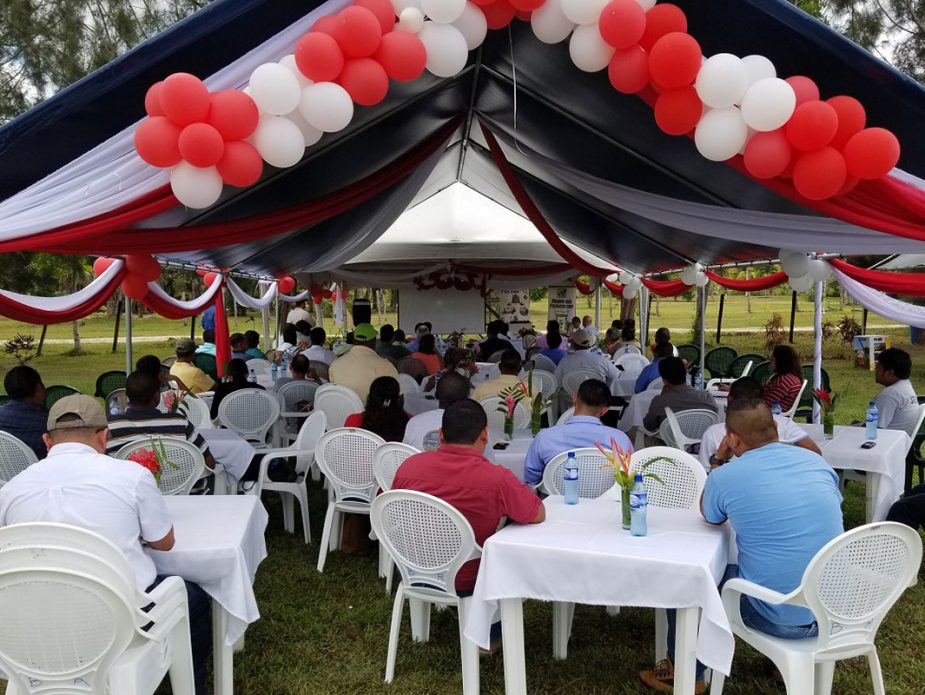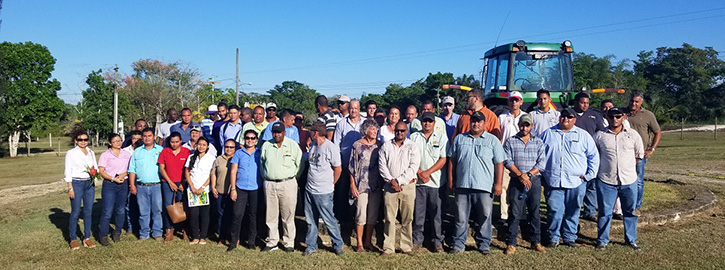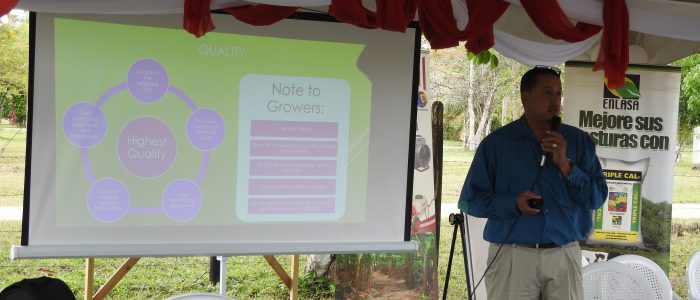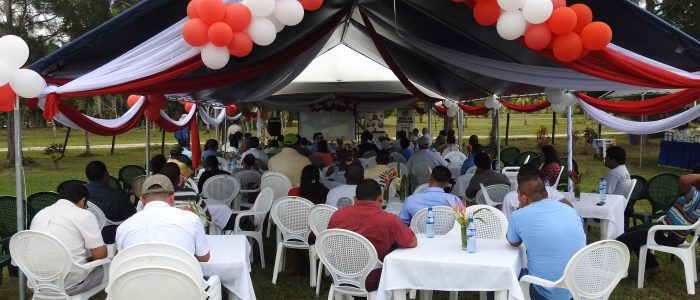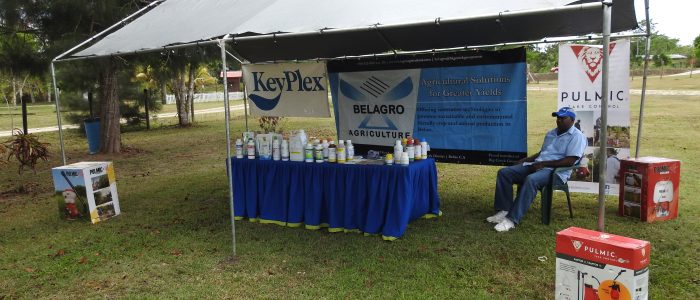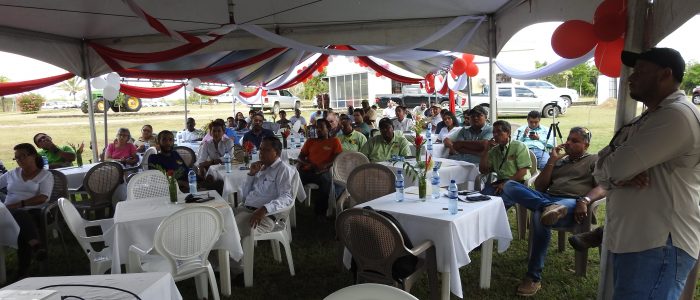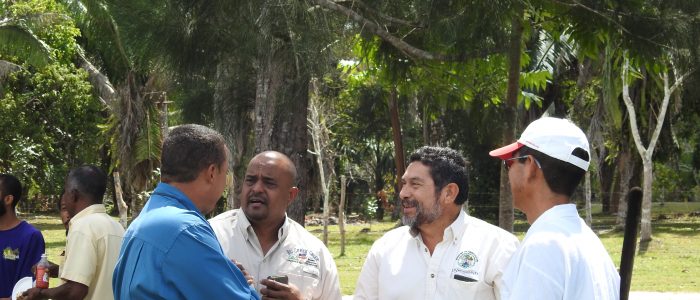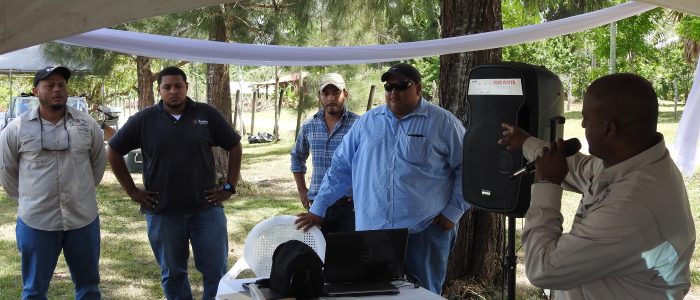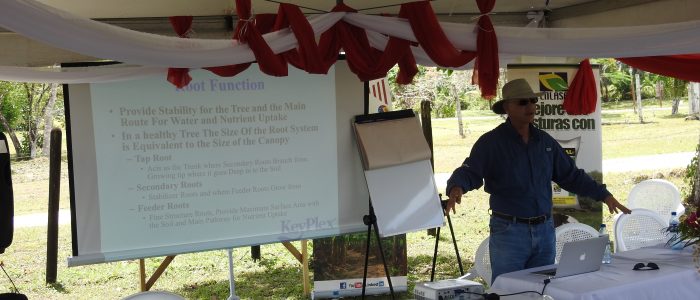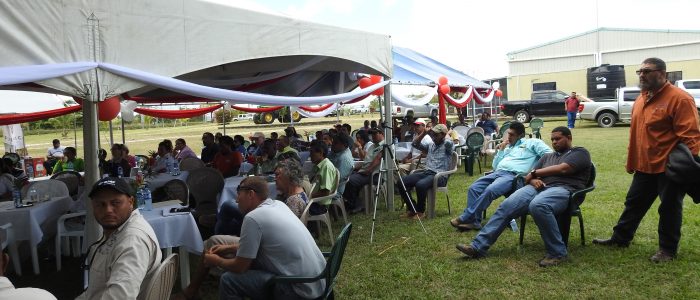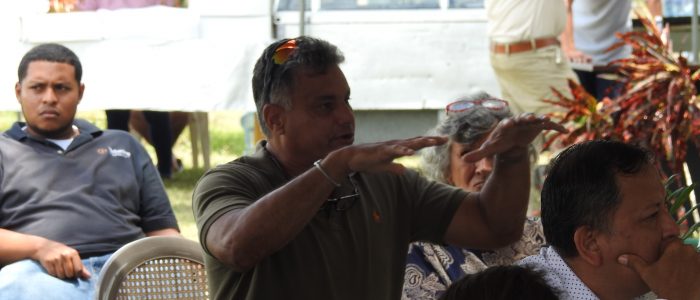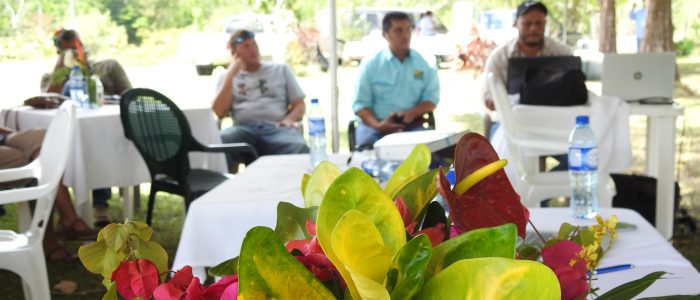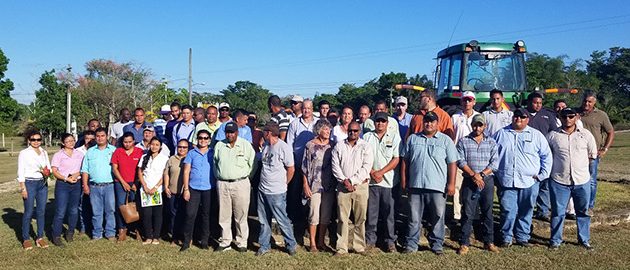Belize National Citrus Conference
The 105 year old citrus industry had its first-ever national citrus conference held on 18 April 2018 at the host Belagro’s Belmopan warehouse of the Big Creek Group of Companies. Belagro’s Manager Wilbert Ramclam moderated the very successful event. The forum was attended by 100 or so participants, that included citrus growers, GOB officials, representatives of the processing company, and other stakeholders.
A presentation was delivered by Dr. Hamed Doostdar of Keyplex Limited. Dr. Doostdar is well respected for his expertise in plant nutrition and the development of agricultural products used in the citrus industry in Florida and worldwide. He shared the successes and challenges faced by citrus growers in Florida and other citrus growing regions in the world. He stressed the importance of selecting good root stock and planting seedlings with plenty of room for the tap root to grow straight down, instead of J shaped; he added that this planting method also allows the secondary and feeder roots to properly form and grow, which is critical for productivity and the increased lifespan of the plant. Dr. Doostdar stated that in Belize it would be advisable for growers to dig through the hard pack when planting to allow the tap root to penetrate deep enough to be able to maximize water and nutrient absorption.
Dr. Doostdar highlighted the root stocks and grafts that should be selected for different growing conditions and fruit characteristics. He also emphasized the fact that regardless of the variety chosen, all citrus plants need to develop a healthy root system and have proper drainage to achieve optimal production results. To solidify his point on drainage, Dr. Dootstdar stated that a citrus plant will die if its roots are submerged in standing water for as little as three days. He also identified critical nutrients required by each variety of citrus and best practices in pest management for citrus groves. Dr. Doostdar declared that there has been a tremendous amount of research conducted on the HLB disease over the years. This scientific work has resulted in the development and implementation of effective treatment protocols, such as those that incorporate antibiotics and nutrients such as iron, which have proven to be increasingly successful in the fields. (The Japanese presented a paper at a citrus conference announcing their success in curing the disease with iron.)
Industry statistics reveal that there are over 30,000 acres of citrus groves in Belize, producing two crops per year. The crops for oranges are harvested in the months of December through June; grapefruits are harvested October through March. The latest production figures were presented by Chief Agriculture Officer (CAO) Andrew Harrison.
| DISTRICT | BOXES PRODUCED |
| Stann Creek | 1,800,000 |
| Cayo | 1,100,000 |
| Belize | 451,000 |
| Toledo | 150,000 |
| TOTAL | 3,501,000 |
While there has been a marked decrease in production since the onset of the HLB disease, there are 2 positive developments in the industry: (1) a substantial number of the trees that were impacted by the HLB disease have been replaced and (2) new acreage. These new groves are being planted with a density of 165 orange trees and 116 grapefruit trees per acre. The demand for citrus products is still greater than the supply, which translates into improved prices for the juices and other by-products, and a tremendous upside for citrus growers to capitalize on by increasing their fruit production.
An overview of the processing plant was given by Mr. Nikita Usher of Citrus Products of Belize, Ltd. (CPBL). He highlighted the challenges faced by CPBL with the frequent changes in import and product certifications and requirements by countries importing Belizean citrus, and the additional expenses related to
these issues. Mr. Usher stated that 42% of the citrus products is exported to CARICOM, 27% is shipped to the U.S., 19% is dispatched to the EU, while 10% of production is consumed in the domestic market. He explained that a mere 2% of citrus products is exported to Japan because of their 25% tariff on citrus imports. An interesting point made by Mr. Usher is that although a vast majority of CPBL’s products are juices in various forms, 21% of the company’s revenue is now generated by the sale of animal feed made from citrus peels, and 12% comes from citrus oils that are used in many different products. (The product called Citrus Power is one of the most effective sprays for killing termites!)
Mr. Usher added that Belize is known worldwide for its quality citrus products; this is attributable to the fact that the fruits are processed within twenty four hours after being delivered to the plant yard. He explained that fruit quality is tested by checking the pound solids/sugar content or BRIX, and the price paid to the grower depends on the results of that test; the higher the BRIX, the higher the price. He underscored the point that fruit does not ripen after it is picked; therefore, growers must ensure that fruits are harvested and processed at the peak of their maturity to guarantee top quality. Fruit that is not picked at its peak falls from the tree and deteriorates, resulting in great loss to the grower.
The decline in citrus production in Belize was the focus of discussion led by Dr. Henry Canton. He said he has lived through 4 such declines: 1984, 1995, 1999 and 2002. He noted that the latest decline in production came after CPBL expanded their processing capacity to 10 million boxes annually; this means that the processing plants are currently operating at only 30% of their maximum capacity. He urged the growers to band together, share information, meet the challenges, and find solutions in a unified effort.
Engineer Fermin Blanco, from the International Regional Organization for Plant and Animal Health (OIRSA), announced that farmers can now access a GOB web site to obtain the weather forecast for the next day, the near future and predictions for the season. The data collected for studying the effects of climate change was developed from models of past data and updates of current satellite data.
The management and staff of Belagro Limited would like to thank all the stakeholders who attended the forum. We plan to build on the strengths of this year’s event, and have an even more impactful forum next year. Based on the interventions made by the participants during the forum, it is clear that there is an urgent need for the industry to develop a strategic plan that will serve as a roadmap to move forward from the current challenged state it is in, to a state of growth and prosperity. Of course, this will require the active participation of all growers, the processor, financial institutions, and the government entities. Belagro’s managing director, Zaid Flores, has committed the company to be a strategic partner in the industry’s recovery. This commitment comes in the form of providing customized products to meet the needs of the growers, creating the enabling environment for information sharing, and tapping into Belagro’s vast international network to make top class technical assistance available to all growers. This commitment is not based solely on the fact that Belagro is a supplier of agricultural inputs; instead it is rooted in the reality that the directors of this company are heavily invested as citrus growers. The success of this industry is our success.


